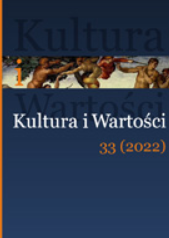Konstrukcja i dekonstrukcja antropocentryzmu: drzewa życia, krzewy, kłącza, korale, szeregi i kladogramy
The Construction and Deconstruction of Anthropocentrism: Trees of Life, Shrubs, Rhizomes, Corals, Series, and Cladograms
Author(s): Adam NobisSubject(s): Ethics / Practical Philosophy, 19th Century Philosophy, Contemporary Philosophy, Human Ecology
Published by: Wydawnictwo Naukowe Uniwersytetu Marii Curie-Sklodowskiej
Keywords: anthropocentrism; nature; man; races; haplogroups; trees of life;
Summary/Abstract: The place of man among living creatures and the world of nature are sometimes presented graphically. Graphics appear in scientific works, where they present research and concepts in an abbreviated form. Many drawings show the privileged position of man, which can be described as anthropocentrism. It dominates especially in the case of older scientific works from the 19th century and from the first half of the 20th century. Among such graphics there are also those in which it is difficult to see anthropocentrism. This is especially true of newer research from the end of the 20th and the beginning of the 21st century. These presentations of new research devoid of anthropocentrism are often polemics with the anthropocentrism of the older ones. Anthropocentrism is accompanied by an axiology in which man is considered the most important value. Other values are considered as such or they acquire their axiotic character as a result of connections with or participation in the most important human value. The polemic with anthropocentrism takes the form of its deconstruction, sometimes accompanied by the presentation of a different, alternative approach. Is this alternative anthropocentrism also accompanied by an alternative axiology? What values appear in it? These are the questions that I would like to answer in this article.
Journal: Kultura i Wartości
- Issue Year: 2022
- Issue No: 33
- Page Range: 83-114
- Page Count: 32
- Language: Polish

